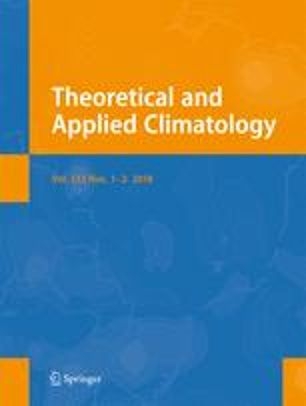Prediction of climate change in Brunei Darussalam using statistical downscaling model
Climate is changing and evidence suggests that the impact of climate change would influence our everyday lives, including agriculture, built environment, energy management, food security, and water resources. Brunei Darussalam located within the heart of Borneo will be affected both in terms of precipitation and temperature. Therefore, it is crucial to comprehend and assess how important climate indicators like temperature and precipitation are expected to vary in the future in order to minimize its impact. This study assesses the application of a statistical downscaling model (SDSM) for downscaling General Circulation Model (GCM) results for maximum and minimum temperatures along with precipitation in Brunei Darussalam. It investigates future climate changes based on numerous scenarios using Hadley Centre Coupled Model, version 3 (HadCM3), Canadian Earth System Model (CanESM2) and third-generation Coupled Global Climate Model (CGCM3) outputs. The SDSM outputs were improved with the implementation of bias correction and also using a monthly sub-model instead of an annual sub-model. The outcomes of this assessment show that monthly sub-model performed better than the annual sub-model. This study indicates satisfactory applicability for generation of maximum temperatures, minimum temperatures and precipitation for future periods of 2017–2046 and 2047–2076. All considered models and the scenarios were consistent in predicting increasing trend of maximum temperature, increasing trend of minimum temperature and decreasing trend of precipitations. Maximum overall trend of Tmax was also observed for CanESM2 with Representative Concentration Pathways (RCP) 8.5 scenario. The increasing trend is 0.014 °C per year. Accordingly, by 2076, the highest prediction of average maximum temperatures is that it will increase by 1.4 °C. The same model predicts an increasing trend of Tmin of 0.004 °C per year, while the highest trend is seen under CGCM3-A2 scenario which is 0.009 °C per year. The highest change predicted for the Tmin is therefore 0.9 °C by 2076. The precipitation showed a maximum trend of decrease of 12.7 mm year. It is also seen in the output using CanESM2 data that precipitation will be more chaotic with some reaching 4800 mm per year and also producing low rainfall about 1800 mm per year. All GCMs considered are consistent in predicting it is very likely that Brunei is expected to experience more warming as well as less frequent precipitation events but with a possibility of intensified and drastically high rainfalls in the future.














